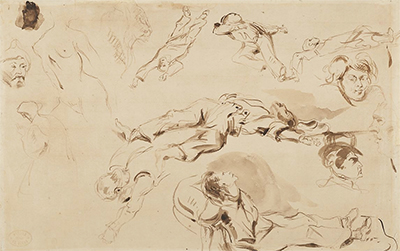Eugene Delacroix was known to be an accomplished draughtsman from a young age, immediately impressing his tutors in his studies, way before he even picked up a paintbrush.
He understood the importance of this discipline and practiced relentlessly throughout his lifetime in order to make much of it second nature. This allowed him to focus on creativity, with the technical side being delivered from his memory. Across his career he would draw all known genres at some point or other and was constantly looking for new challenges in order to keep his passion as fresh as possible. Many of his early drawings were Neo-classical in nature, as that was the style of most of his early teachers. That said, whilst understanding these techniques, he was also encouraged to add his own ideas within his work too. The various sources of training that he received as a young man would also give him different techniques to use, such as "short hatching strokes and juxtaposing planes" academic work and then smoother detail that he developed under the guidance of the Ecole des Beaux-Arts.
The Neo-classicist is more applicable to related artists such as David and Ingres, though all three became highly skilled draughtsman whose careers have all since been examined in considerable detail. The Metropolitan Museum of Art in New York recently devoted an entire exhibition to some of Delacroix's drawings which is believed to be the first major focus on this theme for around half a century. A publication that accompanied the show has provided valuable information for this very article, with a focus on the collection of his drawings owned by Karen B. Cohen who kindly allowed for these all to be displayed to the public for this important exhibition. Indeed, much of the Metropolitan's permanent collection have actually been acquired from private collections through generous bequethed donations over the many years of its existence.
"...Before you begin, study unceasingly, but once started... you must execute freely..."
There are many different ways of gaining inspiration for sketching and Delacroix would call upon a good variety within his career, perhaps explaining how his work in this medium would vary so much across his career. For example, he took on all manner of genres, including landscape drawing, portraits and architectural studies. There were also many animal sketches as he practiced the intricate differences from one creature to the next. The artwork pictured in this page was titled Crouching Tiger, and is one of the better examples of this. There were also many study pieces for later paintings, where either single elements of the later work would be practiced several times over. He might tweak elements in a series of drawings, perhaps months before commencing the later oil or watercolour painting. This method worked well for him and helped avoid making major changes directly on the canvas itself.
Delacroix's academic training would include the study of the human body in great detail and this was a normal path taken by most budding art students in France. He would then add his own ideas on top, which included tackling sculptures from different angles in order to improve his understanding of perspective and light. He would often sit and sketch sculptures within museums over many hours, changing his location every now and again to reinvent the object. He would also study plaster casts as well as prints of past artworks. Interestingly, he would become involved in photography very early on in its inception and he would use photographs in order to draw whilst travelling around. His knowledge of photography would also give him additional technical knowledge that he could apply in other art forms.
His drawings of animals would require the most logistical efforts of all. He would enter the Jardin des Plantes in Paris before the public arrived in order to witness lions being fed. He would then sit for many hours, studying their movements and postures, whilst producing sketches, again and again. He understood the need to practice regularly in order to accurately depict animals such as these. Lions and tigers would then feature in a number of paintings, once he had become confident in his deeper understanding of these creatures. There would also be watercolours too, as he started to explore the use of colour alongside his existing lines of pencil and charcoal. Many at that time would add white heightening to their touches of charcoal and he did the same too, on occasion. In recent years efforts have been made to collate as many of his drawings as possible, and also relate them with his paintings, as so many of them were studies for future pieces.
French sculptor Antoine-Louis Barye would often accompany Delacroix on his zoo visits and left behind his own sketchbooks which reveal more information on how they worked. Both believed that lions and tigers offered some similarities with the muscular makeup of humans as well as offering a symbol of wild nature that would become a key part of the Romanticist movement. Delacroix would also put his sketching skills to good effect in producing a number of lithographs and etchings which enabled him to sell prints to a wider audience which had the joint benefit of spreading his artistic reputation as well as making some of his work affordable to more people. Countless other artists have used such prints as a way of supplementing their income as painters, who can be notoriously unstable, particularly in the early years when they are establishing themselves.
Many of his academic drawings would concentrate on individual limbs or the torso, rather than always focusing on the entire body. This allowed him the time to really improve his understanding of each and every part of the body rather than continually working on areas of the body that he already felt he had mastered. His academic work was not generally dated, making it hard to document each one but comparisons have been made with work from fellow students in order to put a rough chronological order of his development as a draughtsman together. One can perhaps compare this method of capturing individual parts of the body with the work of Michelangelo, whose early artworks would often feature several different sketched body parts on a single page. See also this study of female hands from Leonardo Da Vinci. He was the undoubted master of this sketching genre and someone that all those that followed could look up to and learn from.
The artist also worked on an artistic style called Ecorche, which essentially depicts a partially flayed body for the purposes of demonstrating both the surface of the body and also the underlying structure. The results can be brutal and horrifying, like something out of a Caravaggio painting, but these were essential skills in determining how much an artist understood about what lies below the skin, particularly muscle balance and density. French art teaching by this stage had become impressively rigorous, built up over generations, if not centuries of great masters improving the tutoring at every stage. They would often become involved themselves, having initially gone through the process as students themselves. Although this resulted in a large number of formal, academic artists coming through the ranks, the technical knowledge that it imparted on its students was very useful to almost any art style that exists today. An example from the career of Henri de Triqueti indicates how red chalk would be used for the revealed flesh, with white heightening to bring it to life.
Whilst French art in general placed a huge importance on developing the skills of drawing, whatever art movement or medium you might later specialise on, there were specific artists who achieved particular success within it, prior to taking on their main body of work that would later tipify their overall careers. For example, Charles Bargue actually went to the effort of producing a drawing course which he developed in collaboration with Jean-Léon Gérôme. That course involved studying and copying photographs and completed drawings of sculptures and the publication can still be purchased and made use of today, many centuries later. All those who came withn a century or two prior to Delacroix would also sport large back catalogues of study pieces, normally featuring large amounts of figurative work even though they may not have concentrated on it much when their paintings started to take off. See these Chardin drawings, for example, which came about many years before he specialised in still life art, as shown in the likes of A Bowl of Plums and Still Life with a White Mug.
Delacroix would save his trois crayons for only these ecorche drawings. He would learn around contour within his academic training but then produce much flatter depictions of coins, many of which he would borrow from some of his wealthy connections. He would also sometimes make exchanges of his artworks for items from other's collections. Delacroix would also understand the discipline of copying and would like to take on all manner of different objects from which to practice his sketching. He found some tutoring to be a little dull after a while and always aimed for a greater variety of work in order to keep his interest levels. Whilst he would follow direction obediently, Delacroix would then use his own spare time to broaden his horizons and extend the work he had been given into across other sources of inspiration. He collected prints specifically and was perhaps most impressed by the sketchwork of Raphael, who he once described as having reached the level of perfection. Whilst not studying in Italy, he was entirely aware of the qualities of this region's art, particularly from the different stages of the Renaissance.
Reference: Delacroix Drawings, The Karen B. Cohen Collection 2018.



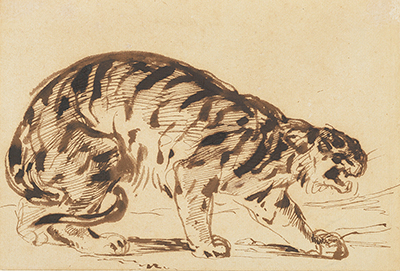
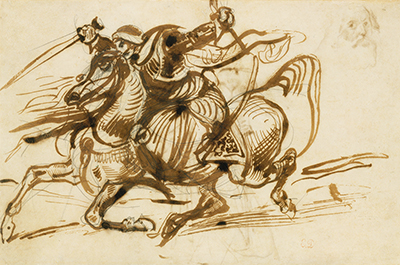
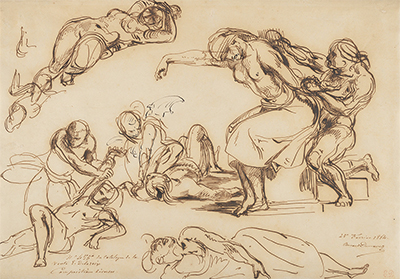
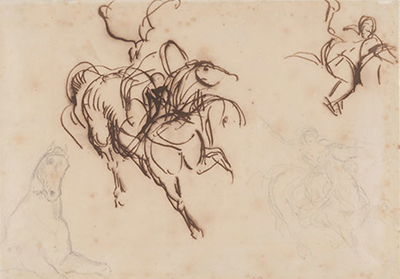
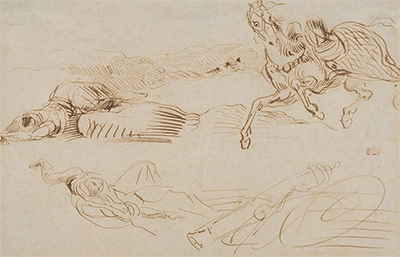
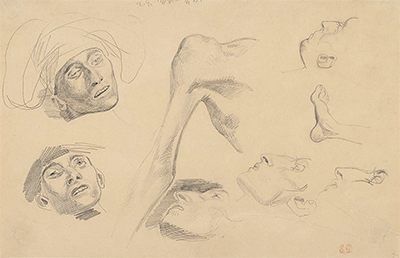
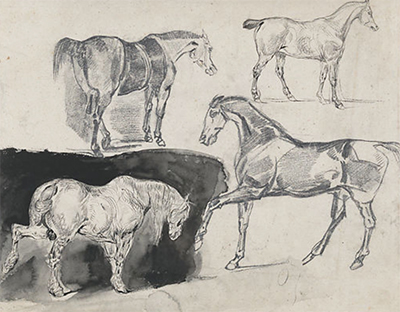
 Eugene Delacroix.jpg)
